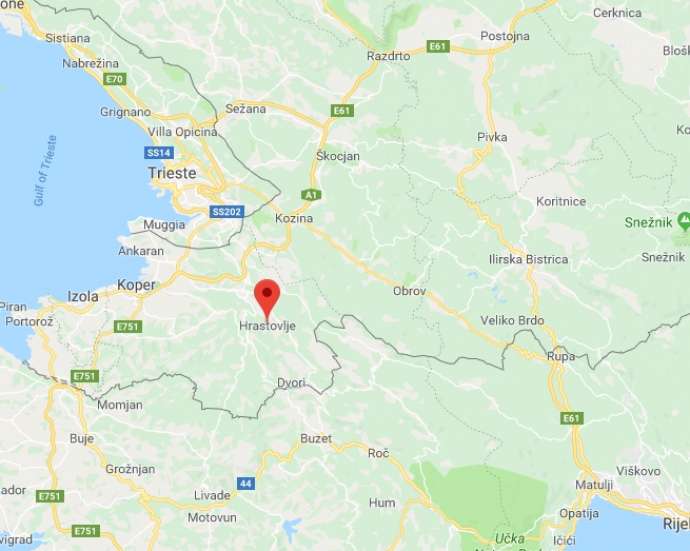STA, 26 June 2019 - Six wagons of a freight train derailed on Tuesday afternoon in a tunnel near Hrastovlje in SW Slovenia, with a large quantity of the jet fuel kerosene leaking out from two cisterns. Transport on the railway has been suspended and there are also concerns that the leak might contaminate the local water supply system.
The response teams immediately started pumping out the remaining kerosene from the cisterns to prevent further leakage and managed to almost completely stop it by the evening.
According to Srečko Šestan, the head of the Civil Protection and Disaster Relief Administration, the problem is that the derailed wagons stand very close to the tunnel wall, which prevents the teams from accessing all leakage points.
Dušan Mes, the head of the national rail operator Slovenske Železnice, said that after the kerosene is pumped from all six derailed wagons, the would be removed from the tunnel and the work on repairing some 150 to 200 metres of damaged tracks would start.
Mes said the pumping would conclude by 2pm today and that the railway would be reopened for traffic on Friday. In the course of the day, it became clear that the cleanup effort would take a few hours longer, but relevant authorities still insisted that the track would reopen Friday.
According to Mes, the most probable cause of the accident is a damaged switch, while a damaged wagon is the less likely option. The possibility of a human error has been eliminated.
The kerosene is being pumped out by teams from the energy company Petrol and Slovenske Železnice, while firefighters are also helping out. It is estimated that some 10,000 litres of kerosene have leaked out of the cisterns.
The tracks in the tunnel are heavily damaged, which makes it difficult to get the pumped kerosene out of the tunnel, he added.
According to Mes, no one has been injured in the accident, except for one firefighter, who has sustained a light injury during the intervention.
The site of the accident is very close to the source of Rižana River, one of the water sources for the only water supply system of the entire coastal area, servicing up to 130,000 people during the summer.
The regional water supply operator and experts share the view that the kerosene is certain to reach the water source, during the first strong rainfall at the latest.
Measures have been taken to prevent the worst, the source has been cut off and monitoring has been put in place. Nataša Viršek Ravbar, a Karst researcher, said that the water source may remain polluted for a long time.
The Environment Ministry said it was closely monitoring the situation, adding that Minister Simon Zajc would inspect the site on Thursday.
Zajc, who is currently attending an EU ministerial in Luxembourg, has already agreed with his Croatian counterpart Tomislav Ćorić to stay in touch in the case that Slovenia needed Croatia's aid in drinking water supply.
As the railway has been closed for traffic, freight trains have been piling up in the port of Koper, with a total of 35 trains currently waiting in the port, the port operator Luka Koper said today.
While the the rail operator is making an effort to open the railway as soon as possible, the Luka Koper said it had advised its business partners to use cargo transport on the road in the meantime.
Luka Koper will be loading and unloading lorries in the port terminals also over the night to compensate for the closure, which means that significantly heavier cargo transport on the motorway in the coming days.
The site of the accident was also inspected yesterday by criminal police officers and forensics, as well as Infrastructure Minister Alenka Bratušek.
Giving a statement for the press today, Bratušek praised the response teams and once again underlined the need for a second rail track connecting the port to the inland hub of Divača.
Preparatory works have been launched recently for the project estimated at just over EUR 1bn, after years of back and forth. The 2TDK, the special purpose vehicle established by the government to oversee the construction, also said that the accident showed how much a new track is needed.
It added that the new, state-of-the art-track would avoid almost entirely the sensitive water supply area and that the tunnels are all planned with oil catchers, which means that any waste water would be caught in waste holdup tanks.







